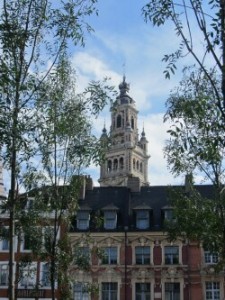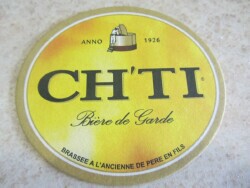Expecting a drab, chilly northern city on my first trip to Lille this summer, I was delighted instead to find a colorful metropolis filled with lively, cheerful people and more cultural activities than many French cities to the south. I was bowled over by the friendliness of the waiters in the restaurants, the staff at the hotel at which I stayed, the people on the bus, the curators at the museums I visited, the beauty of the architecture. There’s an overwhelming exuberance in this city that permeates all activities and fills the visitor with a pleasant sense of acceptance. Quelle surprise!
Take, for example, the Vieille Bourse, a seventeenth-century building in the heart of town. Beautifully sculpted and colorfully decorated, this former commercial exchange built in 1653 is actually composed several small houses constructed around a central open patio originally designed to afford a calm and protected area for the financiers to conduct business away from the elements. Modernized today with shops and restaurants, it was the scene one Sunday afternoon in August of a vast collection of books and art. Couples wandering the interior patio leisurely browsed the stalls and thumbed through the various books, some rare collections, some posters, old engravings and more….a bibliophile’s dream. The very same patio later on that evening had turned into a Milonga: tango lovers, both amateurs and experienced, dressed accordingly in elegant outfits and high heels,danced under the stars to the cherished tango music of the DJ, who blasted out old favorites of Carlos Gardel and Alberto Castillo from his station in the corner.
After decades of slow and painful decline from the destruction wrought in the area by two world wars, Lille has made a comeback in recent years, thanks to an urban remodeling project called Eurolille that began in 1991. The Euralille Centre was opened in 1994, and the remodeled district is now full of parks and modern buildings containing offices, shops and apartments. Lille was named European Capital of Culture in 2004. Its very central location in northern France makes it easy to reach by high-speed train: Brussels is only 30 minutes away; Paris, an hour; London, 90 minutes. From the middle ages to today, it has been a market town; every September the town hosts the largest flea market in the world, the “braderie de Lille.” Thousands of merchants, townsfolk young and old, participate in the buying and selling of anything and everything. An enthusiastic atmosphere is palpable and pervades the entire city.
The recent movie, « Bienvenu chez les Ch’tis »–the hilarious story of a reluctant Provençal who is horrified to be transferred from his
beloved, warm Provence to Lille, the “north pole”, only to be won over by the friendly, loveable townspeople—was a smash hit in France and produced an immediate spike in tourism in the area. And with good reason. The food is excellent, the accommodations first rate, the natives hospitable, the architecture breathtaking, the ambience exuberant, the size comfortable, the cultural activities multiple. A local dictum says, “What the Lillois lacks in sunshine is made up by the warmth in his heart.” What’s not to love?
Next installments on Lille: Lille, Cultural Mecca of the North; Lille, gateway to Europe; Lille, an architectural Jewel.
If you’re considering visiting this beautiful city, read more here!


Leave a Reply